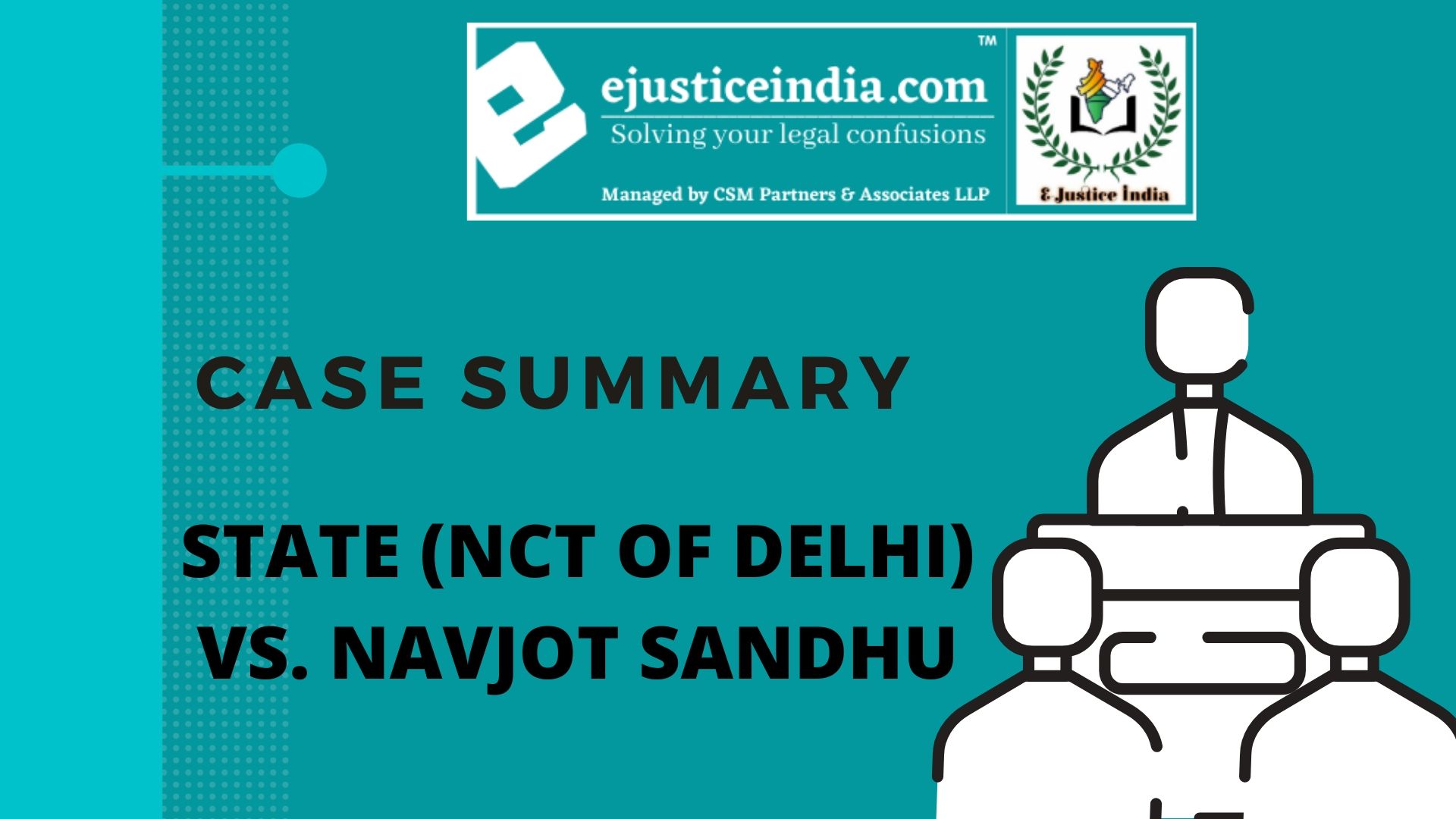Case Summary: State of UP V. Nawab Hussain
Author: Khushboo Chopra (Khalsa College of Law)
CITATION
(1977) 2 SCC 806: AIR 1977 SC 1680
BENCH
HON’BLE JUSTICE P.N. SHINGHAL
INTRODUCTION
The Appeal deals with the sub-set of the principle of Res Judicata that is Constructive res judicata mentioned in the explanation IV and V of the section 11 of the civil procedure code. It states that if a plea is filed by a party in a proceeding between him and the defendant, he will not be allowed to take the pleas against the similar parties in the later proceedings with respect to the same subject matter.
FACTS
An anonymous complaint was filed against Nawab Hussain, the respondent who was a confirmed police sub inspector in Uttar Pradesh. The complaint was investigated by Inspector Suraj Singh who submitted his report to superintendent of the police. Perhaps two cases were registered against the respondent, one was under prevention of corruption act and the other was under the Indian Penal Code. Due to which he was dismissed from the services by the deputy inspector general of police. He filed an appeal which was dismissed. Then he filed a writ petition in Allahabad high court for quashing the disciplinary proceeding on the ground that he was not offered reasonable opportunity to meet the allegations against him. The writ was also dismissed.
He then filed a suit in the court of civil judge, challenging the order of his dismissal on the ground that he had been appointed by the Inspector general of police and that the Deputy inspector of Police was not competent to dismissed him by virtue of provisions of article 311(1) of the constitution.
The State of Uttar Pradesh traversed the suit on the ground that it was barred by the rule of constructive res judicata as ” all the matters in issue in this case had been raised both in the writ petition and special appeal.”
The trial court dismissed the suit and District court upheld the trial courts decision and dismissed the appeal. The High Court was of the view that the suit was not barred by the rule of constructive res judicata. This was pleaded before the Apex court.
ISSUES AND FACT OF LAW
- Whether the principle of constructive res judicata was applicable to petitions under articles 32 and 226 of the Constitution?
- Whether the principle of constructive res judicata could be invoked by a party to a subsequent suit on the ground that a plea which might or ought to have been raised in the earlier proceeding but was not so raised therein, was left open?
JUDGEMENT
Supreme Court allowed the appeal and the impugned judgement of High Court was set aside and respondent’s suit was dismissed. Supreme court observed that:
The rule engrafted in the explanation IV to section 11 of the code postulates that if a pea could have been taken by a party in a proceeding between him and his opponent, he would not be allowed to take that plea against the same party in a future proceeding which is based on the same cause of action. It was particularly held that the doctrine of constructive res judicata was applicable to writ petitions also.
The Rule as declared by the Supreme Court in respect to the plea of res judicata forbidding a subsequent suit on the ground of dismissal of a prior writ petition under Article 226 of the Constitution is that, only that issue urged between the parties will be res judicata which was raised in the earlier writ petition and was decided by the High Court after contest. However, the important plea which was in the knowledge of the respondent and could be taken in the writ petition, but he contended himself by urging other pleas that he was not afforded with reasonable opportunity and the action taken against him was malafide. It was not permissible for him to challenge his dismissal and in the subsequent suit, questioning the validity of the dismissal order given by the authority subordinate to that by which he was appointed, was clearly barred by the rule of constructive res judicata.


